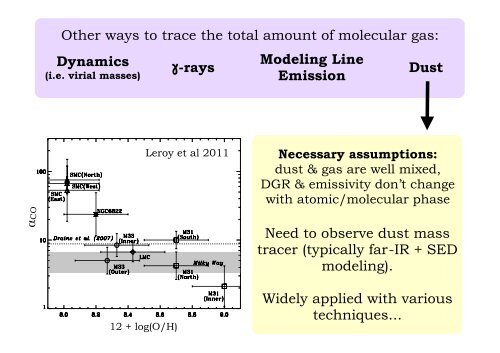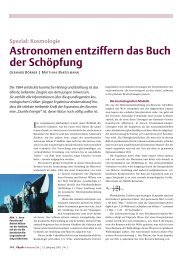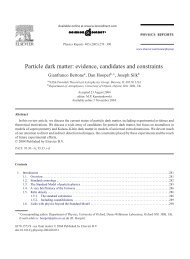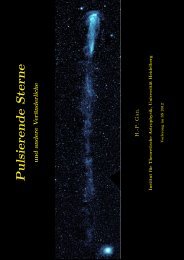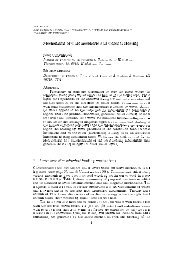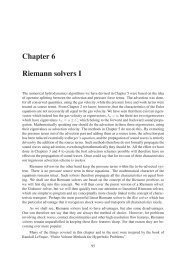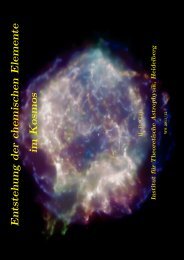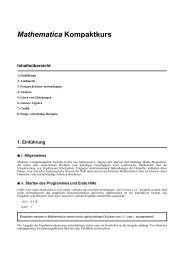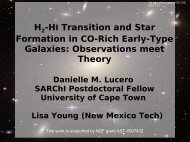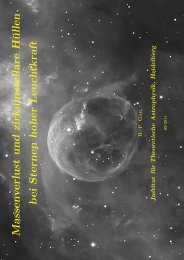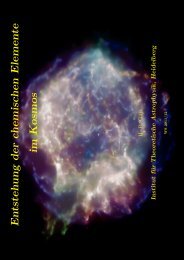Measurements of the CO-to-H 2 Conversion Factor and Dust-to-Gas ...
Measurements of the CO-to-H 2 Conversion Factor and Dust-to-Gas ...
Measurements of the CO-to-H 2 Conversion Factor and Dust-to-Gas ...
You also want an ePaper? Increase the reach of your titles
YUMPU automatically turns print PDFs into web optimized ePapers that Google loves.
O<strong>the</strong>r ways <strong>to</strong> trace <strong>the</strong> <strong>to</strong>tal amount <strong>of</strong> molecular gas:<br />
Dynamics<br />
(i.e. virial masses)<br />
γ-rays<br />
Modeling Line<br />
Emission<br />
<strong>Dust</strong><br />
The Astrophysical Journal, 737:12(13pp),2011August10<br />
Leroy et al.<br />
α<strong>CO</strong><br />
Leroy et al 2011<br />
Necessary assumptions:<br />
dust & gas are well mixed,<br />
DGR & emissivity don’t change<br />
with a<strong>to</strong>mic/molecular phase<br />
Need <strong>to</strong> observe dust mass<br />
tracer (typically far-IR + SED<br />
modeling).<br />
12 + log(O/H)<br />
Widely applied with various<br />
techniques...<br />
Figure 6. Left: α <strong>CO</strong> as a function <strong>of</strong> metallicity. The gray region shows <strong>the</strong> range <strong>of</strong> commonly used α <strong>CO</strong> for <strong>the</strong> Milky Way <strong>and</strong> <strong>the</strong> dashed line indicates <strong>the</strong> value<br />
argued for by Draine et al. (2007) studyingintegratedpho<strong>to</strong>metry<strong>of</strong>SINGSgalaxies.Right:<strong>the</strong>gas-<strong>to</strong>-dustratioδ GDR as a function <strong>of</strong> <strong>the</strong> same metallicities. The<br />
dashed line indicates a linear scaling.


